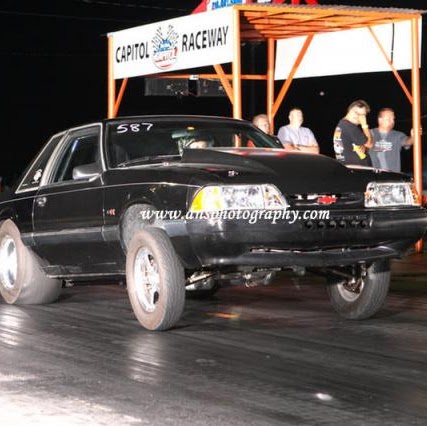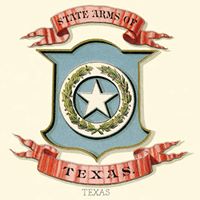Robert J Parks
age ~77
from Tucson, AZ
Robert Parks Phones & Addresses
- Tucson, AZ
- Lesterville, MO
- Tulsa, OK
- Chicago, IL
- Midland, TX
- Painesville, OH
- Orwell, VT
Us Patents
-
Dual Field Of View Optical System For Microscope, And Microscope And Interferometer Containing The Same
view source -
US Patent:6459490, Oct 1, 2002
-
Filed:May 26, 2000
-
Appl. No.:09/580473
-
Inventors:William P. Kuhn - Tucson AZ
Robert E. Parks - Tucson AZ -
Assignee:Optical Perspectives Group, L.L.C. - Tucson AZ
-
International Classification:G01B 902
-
US Classification:356520, 359370
-
Abstract:A dual field of view optical system and a single, lower cost detector are utilized, rather than using a large CCD camera or multiple CCD cameras, to view a sample that has two or more small areas that need to be measured, which are too far apart to fall on the detector but are within the field of view of the objective, or to measure a long, narrow strip that is too long for the detector, but whose total area is less than the detector area. The dual field of view optical system is employed in a microscope which comprises: (1) an illuminator arm with an illumination source and a field stop, (2) a beam splitter, (3) an objective, (4) a sample plane for location of a sample to be observed, and (5) a detector arm, with the illuminator arm configured to illuminate the sample plane through the beam splitter and the objective and with the detector arm configured to receive an image of the sample and including the dual field of view optical system. The dual field of view optical system comprises two beam splitters, two mirrors and one detector, the two beam splitters in the same plane and the mirrors disposed on either side of the beam splitters, an entrance portion for receiving the image from the sample and an exit portion for directing the image onto the detector.
-
Dual Beam Spectrophotometer Modular Sample System
view source -
US Patent:6870615, Mar 22, 2005
-
Filed:Mar 17, 2003
-
Appl. No.:10/390817
-
Inventors:Robert E. Parks - Tucson AZ, US
William P. Kuhn - Tucson AZ, US
Bryan Loucks - Los Altos Hills CA, US
Michael R. Jacobson - Tucson AZ, US -
International Classification:G01J003/42
-
US Classification:356319, 356325
-
Abstract:A modular dual-beam source, sample compartment and beam-combining system are provided when used with a monochromator and detector to form a spectrophotometer consisting of: (a) a source module where two ellipsoidal mirrors each produce an image of the light source, and (b) a reflecting sample-compartment module, wherein each side has two plane-mirrors, of the four plane mirrors, three are reference and one is the sample, or (c) a transmission sample-compartment module, wherein each side has two plane-mirrors, and a sample is placed between one pair of plane-mirrors, and (d) a beam-combining module wherein the source images are imaged by a second pair of ellipsoidal mirrors on a reflective chopper that combines the images at a single location that is imaged, external to the module, by another mirror, each module being kinematically located with respect to each other so the system remains optically aligned as modules are interchanged.
-
Point Source Module And Methods Of Aligning And Using The Same
view source -
US Patent:6924897, Aug 2, 2005
-
Filed:Oct 9, 2001
-
Appl. No.:09/975389
-
Inventors:Robert E. Parks - Tucson AZ, US
William P. Kuhn - Tucson AZ, US -
International Classification:G01B009/02
-
US Classification:356512, 356508
-
Abstract:A point source module is provided, comprising: a Shack cube comprising a beam splitter cube with an attached spherical reference surface defining a reference arm; a test arm that is associated with transmission of optical radiation from a source to a sample; a point source of optical radiation whose emissions traverse both the reference arm and the test arm; and a detector associated with a surface of the beam splitter cube and receiving optical radiation from both the reference arm and the test arm and comprising a detector arm, an objective lens associated with the test arm, or both. Further, a method of aligning the point source module is provided, along with a method of using the point source microscope is provided. The apparatus and methods provide a compact, robust device and technique for measuring or locating optical or mechanical datum of parts that are being manufactured or assembled.
-
Adaptive Nulls For Testing Off-Axis Segments Of Aspherics
view source -
US Patent:20060268282, Nov 30, 2006
-
Filed:May 23, 2006
-
Appl. No.:11/438885
-
Inventors:Christopher Evans - Higganum CT, US
Christoph Kuechel - Jena, DE
Robert Parks - Tucson AZ, US
William Kuhn - Tucson AZ, US -
International Classification:G01B 11/02
-
US Classification:356515000
-
Abstract:A Fizeau interferometer is provided with an adaptive null optic whose shape may be selectively varied in a controllable way by the selective application of external mechanical loads to enable the interferometer to be dynamically adapted to testing a variety of aspherical segments of differing shapes without the need for providing individual reference surfaces to match the various shapes of each test segment.
-
System And Method For Non-Contact Metrology Of Surfaces
view source -
US Patent:20120293808, Nov 22, 2012
-
Filed:Jan 18, 2012
-
Appl. No.:13/353110
-
Inventors:Robert E. Parks - Tucson AZ, US
Robert A. Smythe - Middletown CT, US
Peng Su - Tucson AZ, US
James H. Burge - Tucson AZ, US
Roger Angel - Tucson AZ, US -
Assignee:Arizona Board of Regents on behalf of the University of Arizona - Tucson AZ
-
International Classification:G01B 11/24
G01N 21/88 -
US Classification:356610, 3562372
-
Abstract:A non-contact metrology system utilizes a display that can be programmed with a plurality of targets. The display targets shine on a specular surface and the reflected targets are detected by an imaging device. Based on the display pattern and the expected location of the reflected pattern, it is possible to characterize the reflective surface. The displayed pattern can be a regular array of targets and the reflected pattern detected by the imaging device is an irregular display of targets whose locations are based on the particular display pattern, the location of the display system and imaging device and the nature of the surface. Deviations of the actual location of targets from the expected location of targets is indicative of unexpected variations in the surface. Alternatively, the display has an irregular pattern of targets such that the reflected signals result in a regularly spaced array detected by the imaging device.
-
Noncontact Interferometric Sensor And Method Of Use
view source -
US Patent:20130301056, Nov 14, 2013
-
Filed:May 7, 2013
-
Appl. No.:13/888787
-
Inventors:Robert E. Parks - Tucson AZ, US
-
International Classification:G01B 9/02
-
US Classification:356486, 356489
-
Abstract:An interferometric sensor having an interference objective, an illumination system, and a detection system configured to simultaneous non-contact determination of profile and roughness of a tested surface. The illumination system comprises a radiation source configured to emit three wavelengths of quasi-monochromatic light. The sensor further includes a detection system having a color array detector in optical communication with the interference objective and configured to detect the light reflected by the measurand. The sensitivity of measurement can be adjusted by re-orienting of a portion of the sensor with respect to the measurand.
-
Optical Profilometer Combined With Stylus Probe Measurement Device
view source -
US Patent:59556617, Sep 21, 1999
-
Filed:Jan 6, 1997
-
Appl. No.:8/779087
-
Inventors:Amin Samsavar - San Jose CA
Michael Weber - Sunnyvale CA
Thomas McWaid - Fremont CA
William P. Kuhn - Tucson AZ
Robert E. Parks - Tucson AZ -
Assignee:KLA-Tencor Corporation - San Jose CA
-
International Classification:G01B 528
-
US Classification:73105
-
Abstract:An optical profilometer and a stylus probe measuring device used in the same instrument have the advantage that these two sensors can be quickly switched between each other. This can be an advantage when used to measure samples, since the optical profilometer can be used until a sample is found to be outside of the desired tolerances. Afterwards, the stylus probe measuring device can be used to accurately determine the profile data. This is an advantage because an optical profilometer is relatively quick, and the stylus probe measuring device is relatively accurate. Additionally, since the optical profilometer and stylus probe device are in the same instrument, the X and Y positions of these devices can be interrelated accurately. This allows images to be produced where the positions on the images can be easily correlated. For example, measurement cursors in sensor data displays can correlated by the positional offset information.
-
Renewable Polishing Lap
view source -
US Patent:58974245, Apr 27, 1999
-
Filed:Jul 10, 1995
-
Appl. No.:8/500404
-
Inventors:Christopher James Evans - Gaithersburg MD
Robert Edson Parks - Tucson AZ -
Assignee:The United States of America as represented by the Secretary of Commerce - Washington DC
-
International Classification:B24B 1100
-
US Classification:451 41
-
Abstract:A polishing lap which is resistant to attack from corrosive and reactive ishing media and which has a surface which is sufficiently resilient to provide good finishes without hindering dimensional controlling and accuracy of the texturing comprises: a lap substrate wherein the surface of the lap substrate has an overall shape and a localized texture; and a replaceable lap film applied to the lap substrate surface and which is deformed to correspond to the localized texture of the lap substrate surface. The polishing lap can be easily reconditioned if contaminated or easily modified for use with different abrasives and polishing media.
Isbn (Books And Publications)
-
European Origins Of The Economic Ideas Of Alexander Hamilton
view source -
Author:Robert J. Parks
-
ISBN #:0405099185
-
Democracy'S Railroads; Public Enterprise In Jacksonian Michigan
view source -
Author:Robert J. Parks
-
ISBN #:0804690278
-
Basic Fun For The Commodore 64 Beginner
view source -
Author:Robert Parks
-
ISBN #:0130614416
-
Basic Fun For The Commodore 64 Beginner
view source -
Author:Robert Parks
-
ISBN #:0130614904
-
The Brooch: Mi-Hi
view source -
Author:Robert Parks
-
ISBN #:0595365639
-
Old World Traits
view source -
Author:Robert Parks
-
ISBN #:0875859054
-
From Jackson To Lincoln: Democracy And Dissent
view source -
Author:Robert Parks
-
ISBN #:0875981135
-
The Master'S Hand: Drawings And Manuscripts From The Pierpont Morgan Library, New York
view source -
Author:Robert Parks
-
ISBN #:0875981267
License Records
Robert Barker Parks Rp
License #:
9280 - Expired
Category:
Pharmacy
Issued Date:
Jul 25, 1980
Effective Date:
Aug 27, 2002
Type:
Certified Preceptor
Robert J Parks
License #:
11670 - Expired
Category:
Emergency Medical Care
Issued Date:
Dec 31, 1995
Effective Date:
Jul 19, 2005
Expiration Date:
Dec 31, 1998
Type:
EMT
Robert Barker Parks Rp
License #:
9280 - Expired
Category:
Pharmacy
Issued Date:
Jul 25, 1980
Effective Date:
May 6, 2011
Expiration Date:
Jan 1, 2012
Type:
Pharmacist
Robert J Parks
License #:
ODTA00394 - Expired
Category:
Optometry
Issued Date:
Jan 15, 1991
Expiration Date:
Jan 31, 2001
Type:
Optometrist-TX RX Amplified
Robert J Parks
License #:
CODTG00465 - Active
Category:
Optometry
Issued Date:
Oct 21, 2008
Expiration Date:
Jan 31, 2018
Type:
CSR-Optometrist TX RX Amp. Glaucoma
Robert G Parks
License #:
RS097948A - Expired
Category:
Real Estate Commission
Type:
Real Estate Salesperson-Standard
Lawyers & Attorneys

Robert Parks - Lawyer
view sourceISLN:
904581124
Admitted:
1966
University:
Boston College, B.S.
Law School:
Boston College, J.D.

Robert Parks - Lawyer
view sourceOffice:
Law Offices of Robert L. Parks P.L.
Specialties:
Aviation
Personal Injury
Tort Litigation
Product Liability
Commercial Litigation
Employment & Labor
Personal Injury
Tort Litigation
Product Liability
Commercial Litigation
Employment & Labor
ISLN:
904581100
Admitted:
1964
University:
University of Florida, B.A., 1960
Law School:
Georgetown University, J.D., 1963
Name / Title
Company / Classification
Phones & Addresses
President
Marketing Formula Corp. (The)
Advertising Agencies & Counselors. Market Research & Analysis. Graphic Designers. Business Consultants. Advertising - Direct Mail. Display Fixtures & Materials
Advertising Agencies & Counselors. Market Research & Analysis. Graphic Designers. Business Consultants. Advertising - Direct Mail. Display Fixtures & Materials
17 S. St. Clair St., Ste. 230, Dayton, OH 45402
937 228-8720, 937 228-9693
937 228-8720, 937 228-9693
Owner
Strictly Autoglass Ltd
Auto Repair - Windshield. Glass Shops
Auto Repair - Windshield. Glass Shops
330 Marigold Road, Victoria, BC V8Z 4P9
250 881-3706
250 881-3706
Vice President
Hextek Corp
Optical Instruments and Lenses
Optical Instruments and Lenses
Po Box 42943, Tucson, AZ 85733
Executive
Optical Perspectives Group LLC
Optical Instruments and Lenses
Optical Instruments and Lenses
5130 N Calle La Cima, Tucson, AZ 85718
Chief Executive
Communications Programming, Inc.
Eating Places
Eating Places
7115 North Ave., Oak Park, IL 60302
Owner
Strictly Autoglass Ltd
Auto Repair - Windshield · Glass Shops
Auto Repair - Windshield · Glass Shops
250 881-3706
Owner
Miracle Mist Carpet Cleaning
Carpet/Upholstery Cleaning
Carpet/Upholstery Cleaning
6343 S 33 Ave W, Tulsa, OK 74132
6343 S 33 West Ave, Tulsa, OK 74132
918 280-9003, 918 445-9006
6343 S 33 West Ave, Tulsa, OK 74132
918 280-9003, 918 445-9006
Director
Inland Diversified Real Estate Acquisitions, Inc
2901 Butterfield Rd, Oak Brook, IL 60523
Medicine Doctors

Robert R. Parks
view sourceSpecialties:
Otolaryngology
Work:
Mount Kisco Medical GroupCare Mount Medical
3680 Hl Blvd, Jefferson Valley, NY 10535
914 245-7700 (phone), 914 245-7836 (fax)
Mount Kisco Medical Group
60 Merritt Blvd FL 1, Fishkill, NY 12524
845 223-1082 (phone), 845 765-4988 (fax)
3680 Hl Blvd, Jefferson Valley, NY 10535
914 245-7700 (phone), 914 245-7836 (fax)
Mount Kisco Medical Group
60 Merritt Blvd FL 1, Fishkill, NY 12524
845 223-1082 (phone), 845 765-4988 (fax)
Education:
Medical School
Columbia University College of Physicians and Surgeons
Graduated: 1990
Columbia University College of Physicians and Surgeons
Graduated: 1990
Procedures:
Hearing Evaluation
Inner Ear Tests
Rhinoplasty
Sinus Surgery
Inner Ear Tests
Rhinoplasty
Sinus Surgery
Conditions:
Benign Paroxysmal Positional Vertigo
Deviated Nasal Septum
Laryngeal Cancer
Acute Pharyngitis
Acute Sinusitis
Deviated Nasal Septum
Laryngeal Cancer
Acute Pharyngitis
Acute Sinusitis
Languages:
English
Spanish
Spanish
Description:
Dr. Parks graduated from the Columbia University College of Physicians and Surgeons in 1990. He works in Fishkill, NY and 1 other location and specializes in Otolaryngology. Dr. Parks is affiliated with New York Presbyterian Hudson Valley Hospital Center and Northern Westchester Hospital.

Robert A. Parks
view sourceSpecialties:
Internal Medicine
Work:
Summit Physicians Group
1678 S Merriman Rd, Westland, MI 48186
734 721-0011 (phone), 734 721-0859 (fax)
1678 S Merriman Rd, Westland, MI 48186
734 721-0011 (phone), 734 721-0859 (fax)
Languages:
English
Description:
Mr. Parks works in Westland, MI and specializes in Internal Medicine.
Flickr
Googleplus

Robert Parks
Work:
Manor Country Club - Sous Chef
Education:
LCB - Culinary Arts

Robert Parks

Robert Parks

Robert Parks
Tagline:
I can't belive my wife that I love so much is sipping away from me I don't no what I should do

Robert Parks

Robert Parks

Robert Parks

Robert Parks
Myspace
Plaxo

Robert Parks
view sourceWestwind Contracting

Robert Parks
view sourceBob Parks LLC

Robert Parks Jr.
view source
Robert Kathy Parks
view source
Robert Savage Parks
view source
Robert Parks II
view source
Robert Realiztik Parks
view source
Robert Parks Jr.
view source
Robert Parks Sr.
view source
Robert Parks
view sourceYoutube
Classmates

Robert Jerge (Parks)
view sourceSchools:
Central High School Rushford NY 1981-1985
Community:
Gary Baldwin, Teresa Peterson, Rebecca Roblee, Paul Thorington
Biography:
Life
I look for opportunities to succeed. sometimes I find them, sometimes I don't....

Robert Parks
view sourceSchools:
College Park High School College Park GA 1970-1974
Community:
Stephen Cook, Stanley Abercrombie, Chris Allison, Stell Huie, Cay Ellis, Mary D

Robert Parks
view sourceSchools:
Laney High School Augusta GA 1983-1987
Community:
Charlie Burley, Dianne Tenney

Robert Parks
view sourceSchools:
John Will Elementary School Mobile AL 1976-1980

Robert Parks
view sourceSchools:
Ider High School Ider AL 1978-1982
Community:
Trish Smith, Linda Taylor

Robert Parks
view sourceSchools:
Georgetown Elementary School Columbus GA 1976-1980
Community:
Wayne Durden, Cindy Elder

Robert Parks
view sourceSchools:
Columbian Elementary School Kokomo IN 1977-1980, Kokomo Christian High School Kokomo IN 1982-1990
Community:
Jo Sheets

Robert Parks
view sourceSchools:
Twin Springs High School Nickelsville VA 2002-2006
Community:
Gregory Hillman, Erin Hiner, Connie Laney, Leigh Jones
Get Report for Robert J Parks from Tucson, AZ, age ~77



















